Top 7 Interesting Facts about Badgers
Badgers are tenacious creatures that inhabit the Great Plains region from Canada to Mexico. Some species, including the European, Asian, and Japanese badgers, ... read more...can also be found there. Badger bodies are bigger than skunks and have greyish hair, but their heads resemble skunk heads with a white stripe. Badgers have strong, keen claws that they use to dig their dens. Here are some interesting facts about Badgers.
-
Badgers are omnivorous short-legged members of the Mustelidae family (which also includes the otters, wolverines, martens, minks, polecats, weasels, and ferrets). The squat bodies and adaptations for fossorial behavior of badgers, which are polyphyletic rather than a natural taxonomic grouping, are what bind them together. All are carnivoran animals and are members of the caniform suborder. The fifteen species of mustelid badgers are divided into four subfamilies: the honey badger or ratel Mellivorinae (genus Mellivora), the American badger Taxideinae, the five species of Helictidinae (genus Melogale) or ferret-badgers, and the four species of Melinae (genera Meles and Arctonyx) that include the European badger (genus Taxidae).
These are 15 different species of badgers, which may be found on every continent except Australia, Antarctica, and South America. The Chinese ferret badger is the smallest while the European or Eurasian badger is the largest. The only badger species indigenous to North America is the American badger, which may be found in the Great Plains, the western United States, and certain regions of Canada and Mexico. Although badgers are most frequently associated with their striped faces and large bodies, not all badgers are the same. The tiniest badgers have narrow bodies and are more like weasels, whilst the larger ones have stocky bodies and short legs.
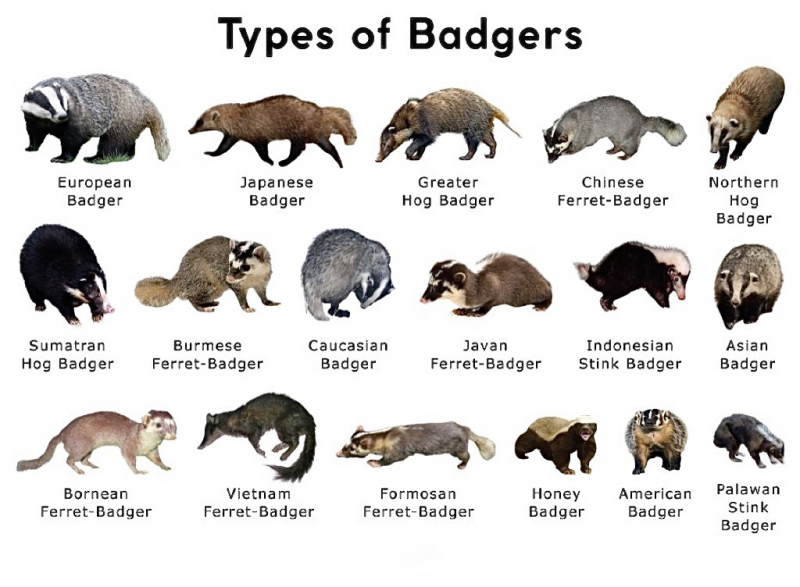
naturenibble.com Robbie McSweeney - youtube.com -
Due to their nocturnal nature, badgers spend the majority of their time foraging at night. Some badger species, such as the honey badger, seek food on their own, while others, such as the Javan ferret-badger, occasionally forage in groups. Badgers are known to be carnivores. Earthworms, insects, grubs, and the eggs and young of ground-nesting birds make up a substantial portion of the Eurasian badger's diet. They also consume fruit, roots, and small animals, amphibians, reptiles, and birds. They may enter cages to occasionally prey on farm chickens but a fox cannot. Badgers in southern Spain eat a lot of rabbits as food.
American badgers are fossorial carnivores, meaning they dig up a large percentage of their prey to eat. They can quickly tunnel for rodents that live under the earth. The African honey badger climbs trees to acquire honey from beehives and eats honey, porcupines, and even poisonous snakes. In addition to their main diet of earthworms, insects, and amphibians, certain animals, like the Chinese ferret-badger, are omnivores that consume a range of fruits and vegetables. After consuming rotten fruit, badgers have been observed to become inebriated by alcohol. Due to their opportunistic feeding habits, honey badgers adapt their diet to the seasonal availability of prey.
In addition, they are also known to be predators of hedgehogs incredible. It can expertly defeat and consume hedgehogs. Hedgehog rescue organizations avoid releasing hedgehogs into known badger territories since badgers are the major predator of hedgehogs in Britain, where hedgehog populations are demonstrably lower in locations with a high badger population. Although there are few records of badgers doing this in the wild, it is known that they store food in their dens. To determine if American badgers would try to store creatures that were larger than themselves, researchers at the University of Utah investigated the behavior of the animals in 2016. Two scientists installed cameras and dumped two dead calves in the desert. Over days, two badgers buried the animal remains independently. To sleep close to the buried animals, they also constructed dens for themselves. The accomplishment was especially noteworthy because the calves were three to four times heavier than the badgers.
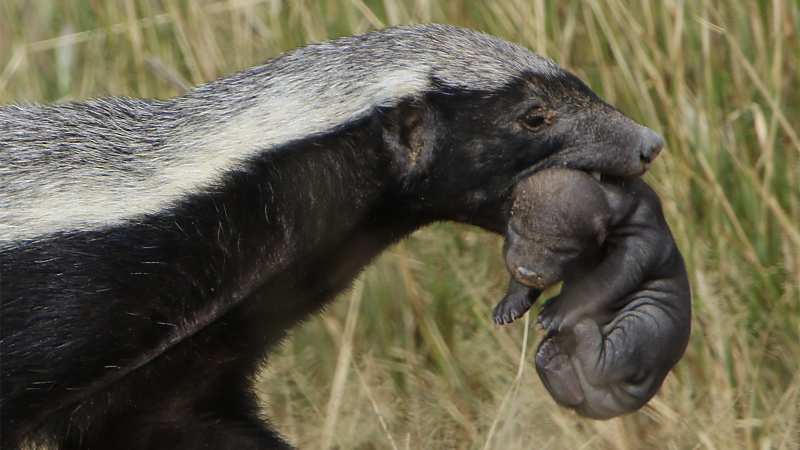
twitter.com 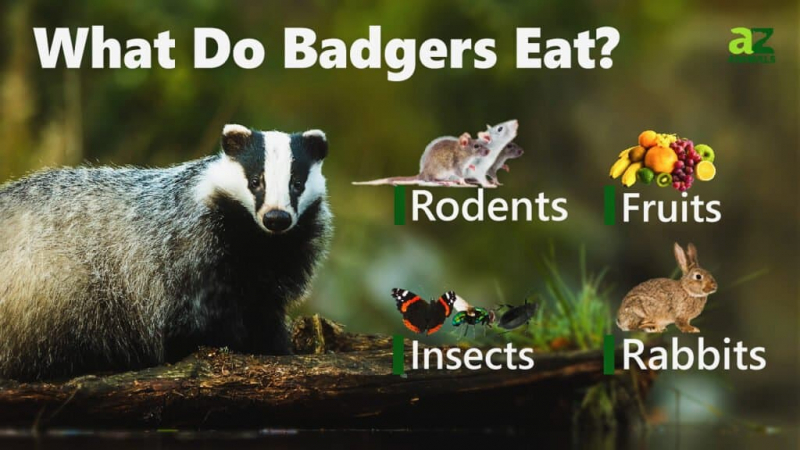
twitter.com -
One of the interesting facts about Badgers is that they are great excavators. Badgers can effectively dig through dirt and more resilient surfaces because of their powerful forelimbs. They build extensive tunnels known as setts or dens using their powerful digging abilities. Although badger behavior varies by family, all take refuge underground in setts, which can be quite large burrows. While some are known to live alone and move from house to house, others are known to create cetes or clans. Therefore, the density of caves they train in constitutes the most complex system, and this system is inherited from generation to generation.
The number of exits for a nest varies from a few holes to 44-50. Badgers can dig a very large nest, and can sometimes accommodate many "families". In the case of many families living together, many sections are separated and separate areas are formed. Many nests may have exits to be used only in case of danger or play. A typical nest is 22–63 cm wide and 14–32 cm high. There are 3 areas in a nest, some of which are open at both ends. Each area is located 5–10 m from the door, and more than 1 m above the ground, in some cases 2.3 m. In general, the passages in the cave are 35–81 m long.
Badgers spend much of their time in their dens napping and collecting prey. Badgers frequently change where they sleep each night and have several tunnels scattered around their home area. Although badgers have partly webbed feet that are more suited for climbing than digging, they also have long claws for digging. Badgers burrow throughout the year, especially in the fall and spring. Areas in the nest system are often lined with materials such as grass, hawk ferns, straw, leaves, or moss. They up to 30 bundles of grass can be brought into the nest in one night. They are known for being clean animals, often replacing old nesting materials. During the winter, they can take the lining materials outside to expose to the bright sun and wear them in the afternoon. Spring cleanup to welcome the young, and this can be done several times throughout the summer to prevent parasites.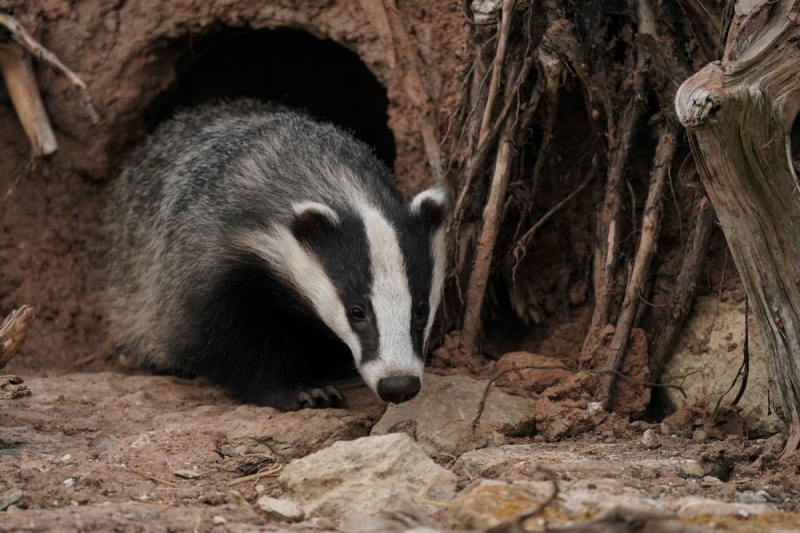
twitter.com Matthew Halley - youtube.com -
Although badgers prefer to hunt alone, they will cooperate with other animals if it would help them. Coyotes are an example of this. Coyotes and the badger frequently cooperate to maximize their chances of snatching a meal. Both are cunning carnivores, so it seems to reason that they would be adversaries or at the very least stay away from one another given how frequently they hunt the same prey on the same plains. Coyotes and badgers have a long-standing agreement that demonstrates why it may be advantageous for enemies to cooperate.
Each hunter in the group possesses a unique set of abilities. Coyotes are adept at pursuing prey over a wide grassland because of their agility and quickness. Badgers have evolved to hunt tiny animals in underground tunnel networks, thus they are slower and less agile runners than coyotes, but they are superior diggers. The badger keeps the targeted prey from hiding in its tunnels while the coyote delivers the speed and may pursue prey that is running.
Despite the link between coyotes and badgers seems to be improbable, it benefits both species. Thus, when badgers and coyotes cooperate, they combine these abilities to hunt more successfully than each could do on its own. Coyotes pursue prey above ground, while badgers take over for underground chases.
Epic Nature Judy Lehmberg - youtube.com Caters Video - youtube.com -
Eurasian badgers are the nicest and biggest of the badger species. The majority of Eurasian badgers live in groups of two to 23 individuals, in contrast to the more lone American badger. The availability of food and the badger population density heavily influence social behavior. The badgers grow more independent when food is short. But Eurasian badgers are content to share when supplies are ample. In contrast to those who reside in densely populated places, where the badgers frequently share their dens and other resources, the individuals who live in areas with a lower total population choose to live individually.
The tunnels of the Eurasian badgers are occasionally shared by other creatures including rabbits, porcupines, red foxes, brown rats, wood mice, stone martens, pine martens, and coypus. The commensalism between red foxes and badgers is the most fascinating. They may share territories with red foxes or European rabbits. Rabbits can benefit from the presence of badgers, as protection against other predators, and often avoid predation by badgers themselves by burrowing in smaller, hard-to-reach areas. area in the nest. The capacity of these species to cohabit is thought to indicate spatial and conditional niche segregation, according to researchers looking into the sharing of dens between these species.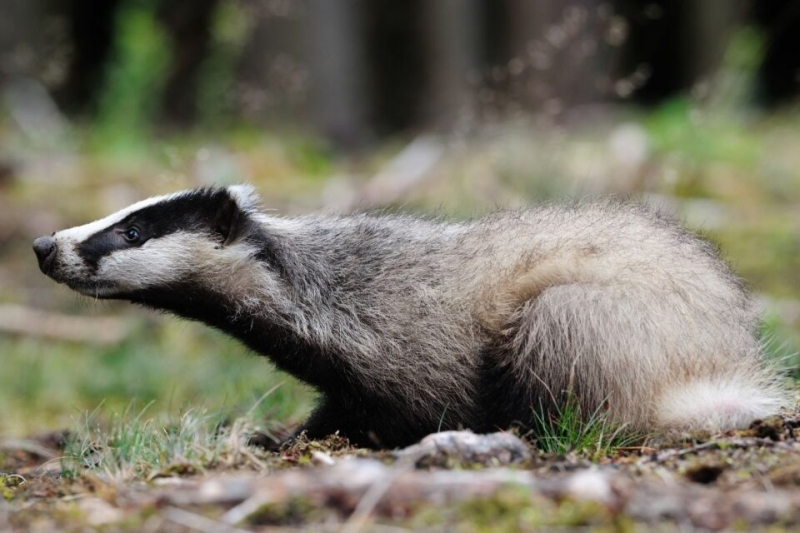
wildlifeboss.com 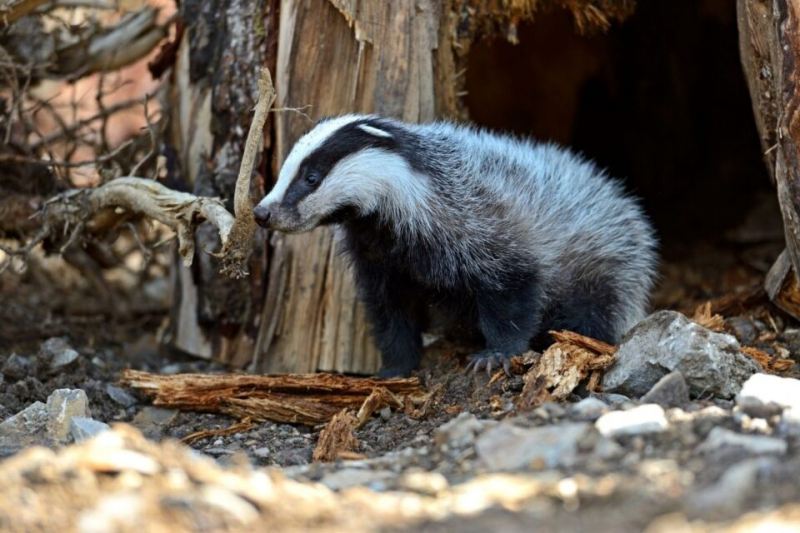
wildlifeboss.com -
Honey badgers have a reputation for being brave and tough. As they move around every day in search of food, they usually stay to themselves. A male honey badger will physically protect his mate if he thinks she is in danger. Honey badgers use urine and excrement to designate their burrows as places where others are not welcome. When one guy tries to take over another male's burrow, things may get extremely nasty. The two will participate in a dance of power to decide who remains and who departs.
Besides, Honey Badgers have jaws that are exceptionally strong in addition to having keen teeth. This is advantageous since the Honey Badger eats the bones together with the flesh of its victim. The jaws are even strong enough to easily consume a turtle, complete with a shell. The Honey Badger is not only naturally hardy but also very smart. Even employing tools to catch prey has been seen. Additionally, they are shrewd enough to locate beehives where they may consume the larvae and honey by following Honeyguide birds.
There are a few characteristics that make honey badger tough. Due to their robust build, honey badgers can readily flee from a predator or defend themselves. They have very strong, rubbery skin that is roughly 1/4 inches thick and almost impenetrable to spears and arrows prepared using conventional techniques. Furthermore, its skin is resilient enough to withstand a full hit from a sharp machete without necessarily being completely severed. Practically speaking, this skin helps shield the Honey Badger from predators' fangs. Additionally, the honey badger possesses a resilience that enables them to swiftly recover from the venom should something get through their loose, rubbery skin, such as a bee sting or a snake bite.
The Honey Badger's skin is exceptionally robust, thick, and rather loose, giving it a lot of room to move around inside the skin. This helps it especially when it is being attacked by larger predators and is caught in the mouth of the predator. It may then wiggle around in its skin and get its large claws and mouth with sharp teeth in such a position to hurt the predator that is holding it. The creature's face and eyes may be mercilessly attacked by the Honey Badger as it just wriggles about. It's interesting to note that the Honey Badger also possesses a reversible anal pouch with a powerful, suffocating stench. The employment of this stink as an additional line of protection against powerful predators like lions has been reported.
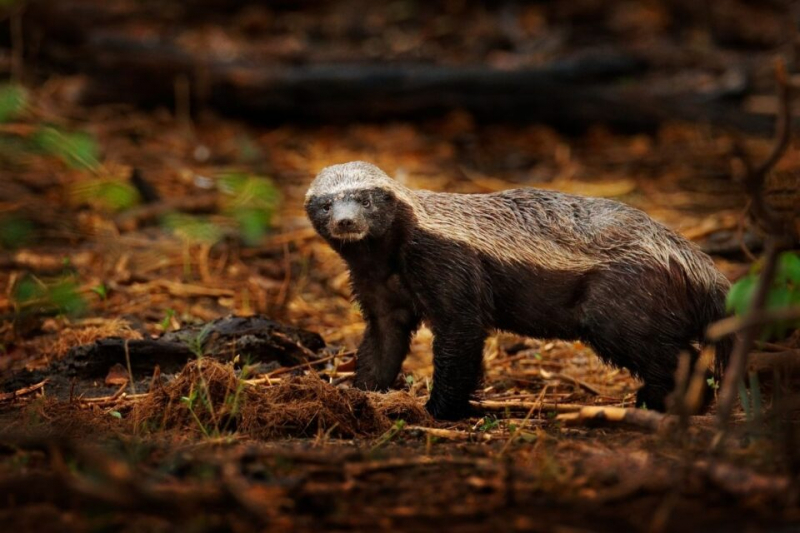
wildlifeboss.com WILDOPEDIA - youtube.com -
While the majority of badger species are not thought to be in danger, the Bornean ferret-badger and bigger hog badger are. The Bornean ferret-badger, which can only be found in Borneo, is a declining species that is in danger. Because of its narrow range of under 2,000 square miles inside a single forest and susceptibility to catastrophic occurrences, the Bornean ferret-badger faces its greatest threat. The ferret-badger and other species living at comparable heights in the forest are predicted to suffer adverse effects from climate change.
In its range, which includes Bangladesh, Cambodia, India, Laos, Myanmar, Thailand, and Vietnam, the hog badger's population is in decline. The main cause of the hog badger's decrease is the hunting of them for food. The natural habitat's shrinkage and fragmentation, as well as changes in agriculture, are further significant causes. Thailand, Bangladesh, and India all have protected status for the larger hog badger.
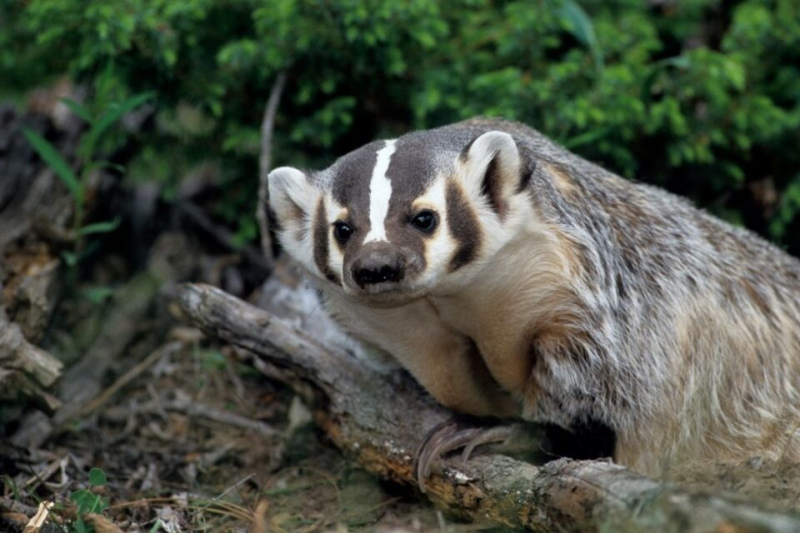
medicalxpress.com 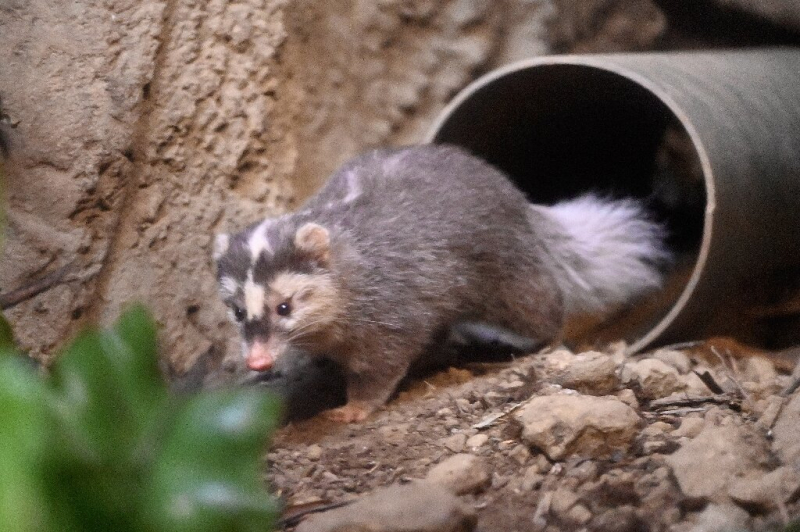
medicalxpress.com




























